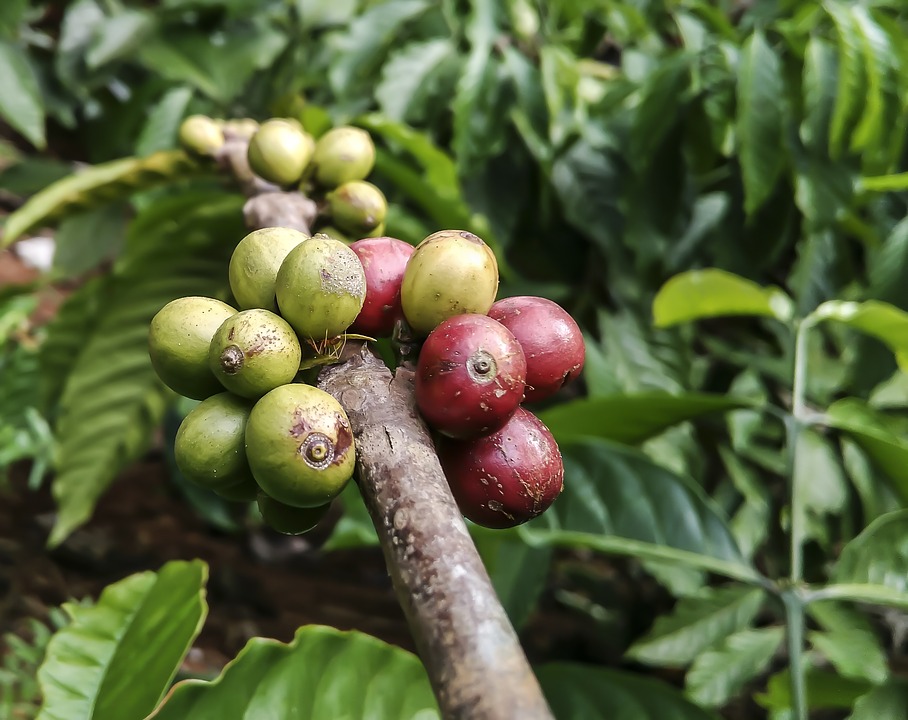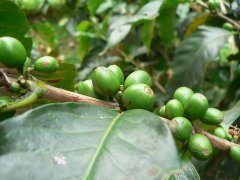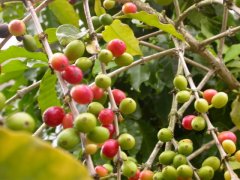El Salvador Pyrenees Estate Sunburn Lot #14 Double Estate Cooperative Processing Beans
Professional barista communication, please pay attention to coffee workshop (Weixin Official Accounts cafe_style)

Name: Los Pirineos Natural #14
Country: El Salvador
Production area: Berlin Ursula Dan Usulatan
Grade: Screen 15 or above, zero defects
Treatment Method: African Scaffolding Sunlight Treatment Natural Process
Package: Bourbon Elite
Altitude: 1350 m
Flavor: Nutty, dark berry peel, malt, cedar, peanut, herbal
Gilberto Baraona's Los Pirineos estate is located on top of Tepeca Volcano in Salvador Ursulatan. The local weather, with its nutritious volcanic soil, abundant rainfall, and moderate temperature differences, provides an excellent environment for coffee to grow. Coffee has been grown since 1890, when, according to the family, they introduced the tree to Guatemala.
Coffee is grown separately according to size and variety. At present, the main varieties are Bourbon Elite, Pacas and Pacamara. Some areas of the estate are testing different varieties. Therefore, this estate has many natural native species, natural mutants and mixed varieties from all over the world. Los Pirineos was a pioneer in the establishment of microprocessing plants in El Salvador. The owner of the manor is still experimenting with treatment and drying.
This unique batch was grown and harvested by Roberto Schonemberg, owner of Gilberto's neighbor San Juan, and sent to the Los Pirineos processing plant for processing. At harvest time, trained harvesters select only mature fruit, and then manually cull immature fruit again in the treatment plant. And carry on the full sun without shade, in the trellises with 1-2 fruit depth, light flat exposure, and frequency of turning. After a few days, increase the thickness of exposure on the trellis (3-4 fruits). Dry slowly to avoid over-thickening caused by secondary fermentation.
Important Notice :
前街咖啡 FrontStreet Coffee has moved to new addredd:
FrontStreet Coffee Address: 315,Donghua East Road,GuangZhou
Tel:020 38364473
- Prev

Ethiopia Rosa Village Manor # 1 the unique flavor of wild Rosa describes where Rosa Village is.
For professional baristas, please follow the coffee workshop (Wechat official account cafe_style) Product name: Rosa Village Horticultural Geisha # 1 Gesha Village Geisha#1 country: Ethiopia Ethiopia production area: Rosa Gesha Grade: Grade 1 treatment method: tanning method Natural Process breed: wild geisha Wild Geisha altitude: 1900-2100 m
- Next

The huge difference between the Incht Manor and the Injit Manor in the Vivette Nan Fruit region of Guatemala
Production area: Vivette South Fruit Plateau producer: Ingert Manor altitude: 1500mm 1850m Variety: Kadu Epobon treatment method: washing Grade: SHB Flavor description: temperate fruit notes, drupe cream, peanuts, toast, mild and introverted acidity, smooth taste Finca El Injertal is a family owned and operated estate located near the small town o
Related
- Does Rose Summer choose Blue, Green or Red? Detailed explanation of Rose Summer Coffee plots and Classification in Panamanian Jade Manor
- What is the difference between the origin, producing area, processing plant, cooperative and manor of coffee beans?
- How fine does the espresso powder fit? how to grind the espresso?
- Sca coffee roasting degree color card coffee roasting degree 8 roasting color values what do you mean?
- The practice of lattes: how to make lattes at home
- Introduction to Indonesian Fine Coffee beans-- Java Coffee producing area of Indonesian Arabica Coffee
- How much will the flavor of light and medium roasted rose summer be expressed? What baking level is rose summer suitable for?
- Introduction to the characteristics of washing, sun-drying or wet-planing coffee commonly used in Mantenin, Indonesia
- Price characteristics of Arabica Coffee Bean Starbucks introduction to Manning Coffee Bean Taste producing area Variety Manor
- What is the authentic Yega flavor? What are the flavor characteristics of the really excellent Yejasuffi coffee beans?

